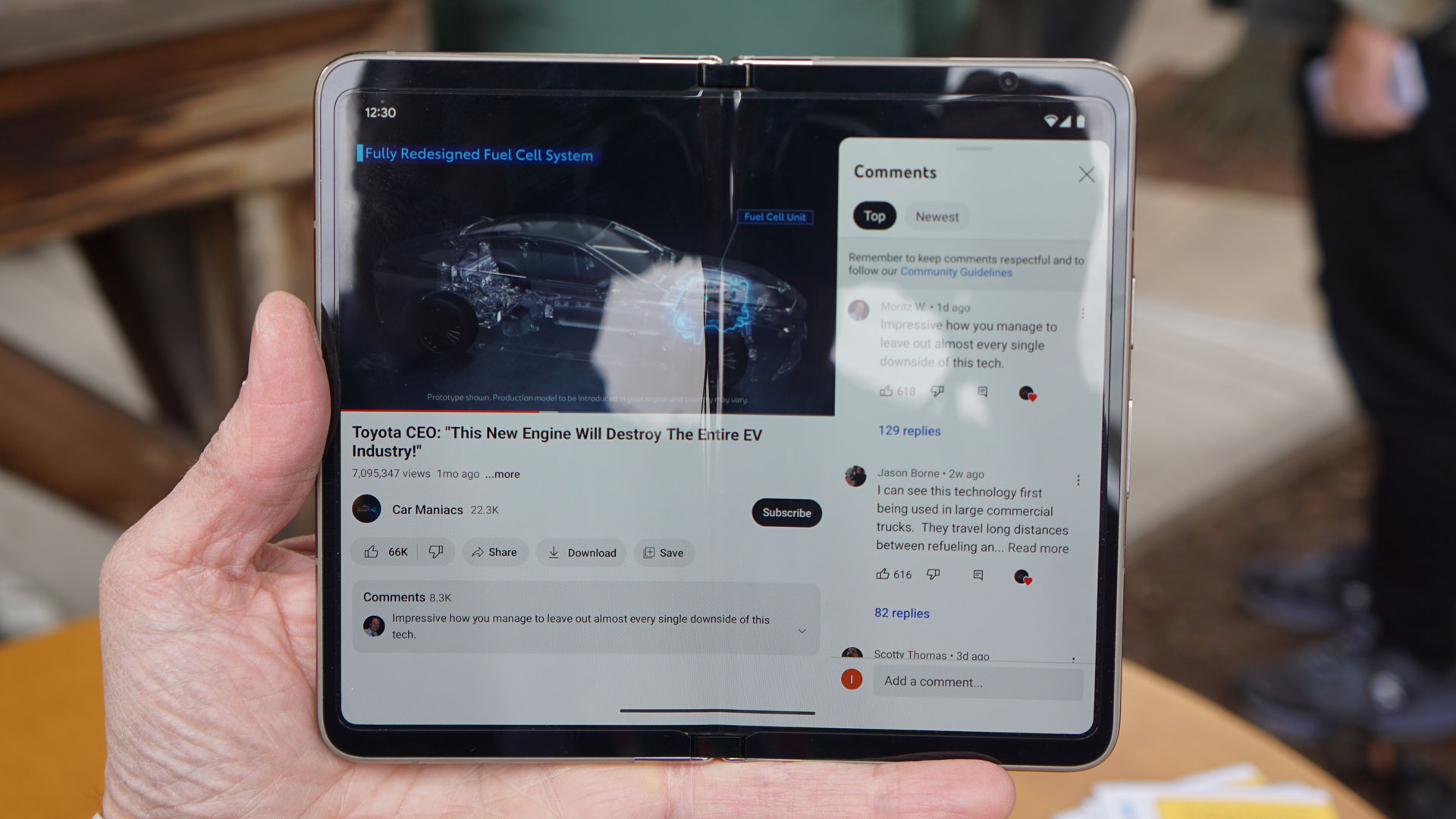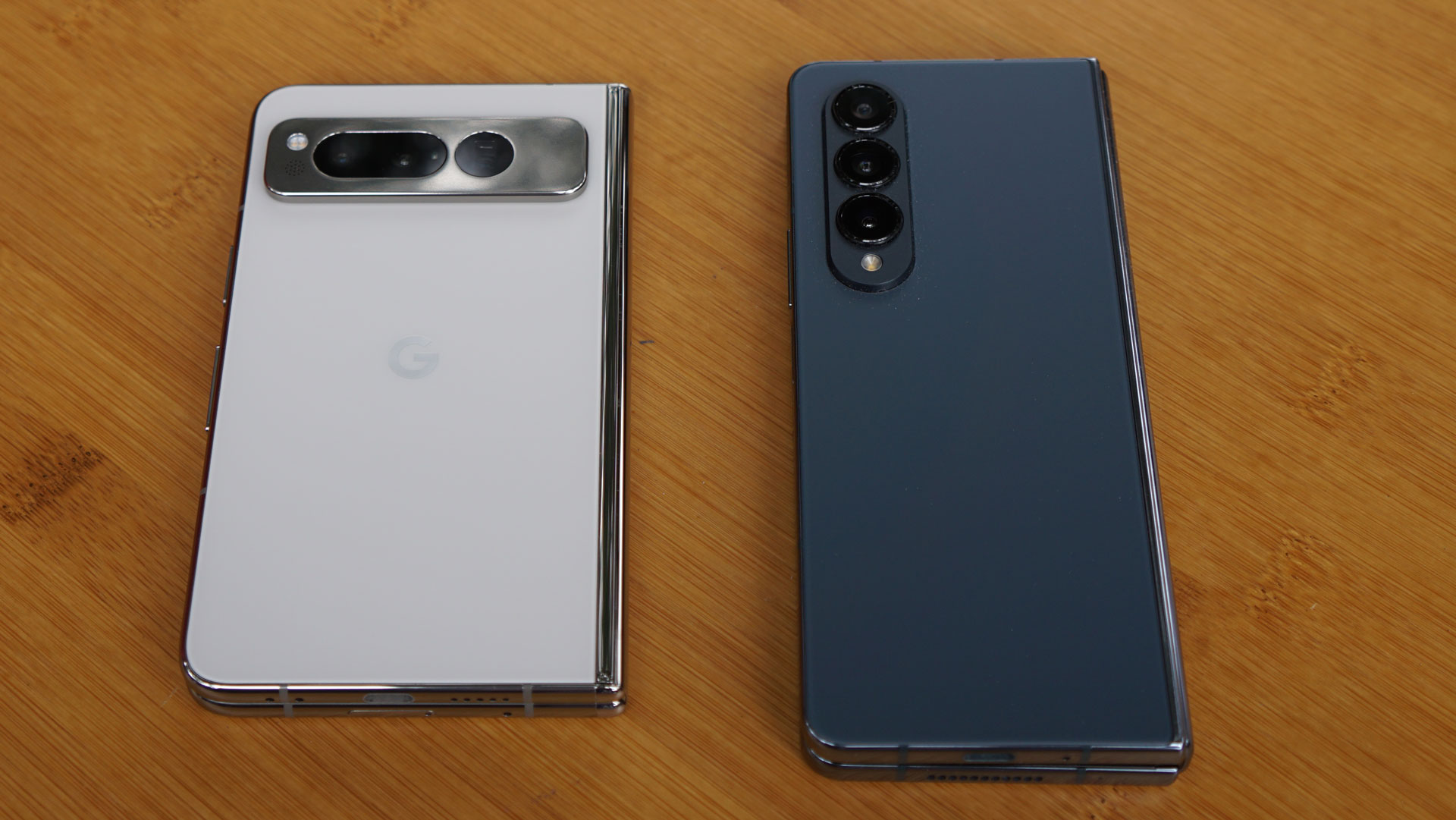1-minute news: everything you need to know about the Google Pixel Fold

What's the story?
The Pixel Fold is Google's first ever foldable phone, comparable to the Samsung Galaxy Z Fold 4. It was announced at Google I/O 2023 and can be pre-ordered now ahead of its June launch. It costs $1,799 / £1,749 (no Australian release is planned).
What do I need to know about it?
It has a large, 7.6-inch bendy screen with a fast 120Hz refresh rate, and a 5.8-inch exterior display for one-handed use when it’s closed. Inside is a Tensor G2 processor (same as the new Pixel 7a) and 12GB RAM, which should make it smooth and swift.
On the back is a triple-camera system, with a wide-angle lens, 5x zoom lens and an ultra-wide lens – standard stuff for the best phones today. The promise of up to 72 hours of battery life in Extreme Battery Save mode is nice – but expect more like 24 hours normally, Google says.
Most importantly, the version of Android it runs is built for folding devices, with smart options such as split-screen apps, and a tabletop mode so you can sit it on a table like a laptop.







What do we think of it?
In our early hands-on Pixel Fold review, we said “it looks like the experience may be a cut above what Samsung currently offers with the Galaxy Z Fold 4."
But what really stood out was the design: it’s much smaller and more pocketable than Samsung’s folding phone, but also more usable. “It's like they're not in the same class,” said US Editor-in-Chief Lance Ulanoff.
But we still have concerns over the chunky bezel inside, the crease down the center of the screen, and that it doesn’t go totally flat when unfolded. Check back for our full review soon.
Sign up for breaking news, reviews, opinion, top tech deals, and more.
Further reading
- Google I/O 2023 as it happened: all the announcements
- Read our full Google Pixel 7a review
- Or our initial Google Pixel Tablet review thoughts
- For Google, there is no such thing as too much AI
- There's no need to learn how to write polite emails any more – Google does it for you
- Google is making it impossible to be a bad photographer, but is that a good thing?

Matt is TechRadar's Managing Editor for Entertainment, meaning he's in charge of persuading our team of writers and reviewers to watch the latest TV shows and movies on gorgeous TVs and listen to fantastic speakers and headphones. It's a tough task, as you can imagine. Matt has over a decade of experience in tech publishing, and previously ran the TV & audio coverage for our colleagues at T3.com, and before that he edited T3 magazine. During his career, he's also contributed to places as varied as Creative Bloq, PC Gamer, PetsRadar, MacLife, and Edge. TV and movie nerdism is his speciality, and he goes to the cinema three times a week. He's always happy to explain the virtues of Dolby Vision over a drink, but he might need to use props, like he's explaining the offside rule.